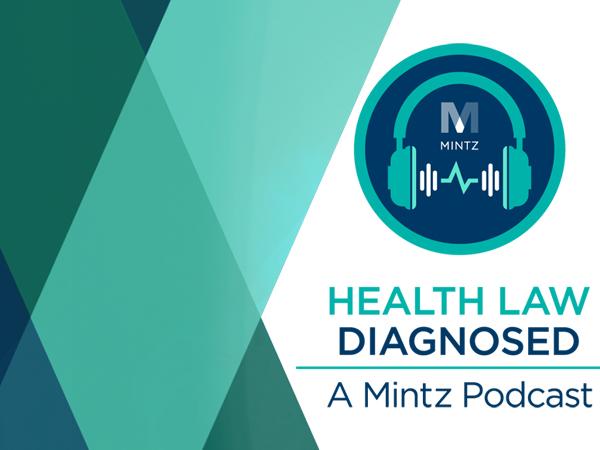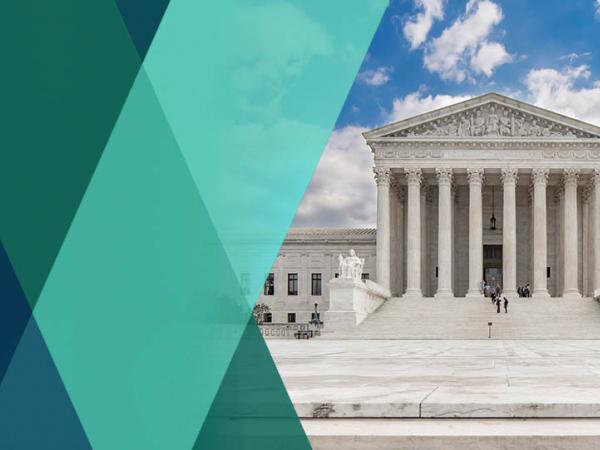
Health Care
Viewpoints
Filter by:
ML Strategies Health Care Preview - Week of January 7, 2019
January 7, 2019 | Blog
The partial government shutdown is on its 17th day with no end in sight. In this week's preview, we discuss how reaching a solution is challenging for both sides and implications for legislating going forward. We also cover some of the latest polling on health care issues, which may offer a preview into messaging in this space over the next two years.
Read more
HIPAA and Health Care Data Privacy - 2018 Year-in-Review
January 4, 2019 | Blog
Today, we’re looking back at HIPAA and other privacy and security developments in 2018. This past year saw continued HIPAA enforcement (including the largest ever fine for a HIPAA breach), reminders from the OCR on best practices for HIPAA compliance, and updates to state and international privacy and security laws. We’ll also look ahead to 2019, which could bring several significant changes to HIPAA, such as reducing the burdens for sharing patient information in order to promote care coordination and better patient outcomes.
Read more
340B, When a Price Adjustment is Not Really an Adjustment, and the Implications for CMS Efforts to Attack Drug Prices
January 2, 2019 | Blog
The Federal Courts gave the America Hospital Association and 340B covered entities a late Christmas present and in doing so may have dealt a blow to the Trump Administration’s initiatives aimed at controlling or reducing drug prices.
On December 27, 2018, Judge Rudolph Contreras granted the American Hospital Association’s Motion for a Permanent Injunction over CMS’ Medicare Part B reimbursement cut for 340B hospitals. As I have previously written, the vehicle for that reimbursement cut was the 2018 Outpatient Prospective Payment System (OPPS) rule, and CMS’ existing authority to adjust OPPS drug reimbursement.
Read more
On December 27, 2018, Judge Rudolph Contreras granted the American Hospital Association’s Motion for a Permanent Injunction over CMS’ Medicare Part B reimbursement cut for 340B hospitals. As I have previously written, the vehicle for that reimbursement cut was the 2018 Outpatient Prospective Payment System (OPPS) rule, and CMS’ existing authority to adjust OPPS drug reimbursement.
FDA 2018 Year in Review (and a Few Thoughts on 2019)
December 27, 2018 | Blog | By Joanne Hawana, Benjamin Zegarelli
As 2019 quickly approaches, we would like to take a few moments to reflect on the past year of Food and Drug Administration activities and certain big ticket items that made news in 2018. As the Magic 8-Ball would say: “signs point to yes” that everything on the list below will continue to be major areas of focus for both FDA and the U.S. Congress next year and into the foreseeable future.
Read more
As 2019 Approaches, Private Equity Investment in Health Care Shows No Signs of Slowing Down
December 26, 2018 | Blog | By Cassandra Paolillo
As the year draws to a close, it’s clear that 2018 was another record year for private equity investment in health care. In its report on the top health industry issues of 2019, PWC’s Healthcare Research Institute recently highlighted the continued prevalence of private equity in health care transactions, and predicted even more private equity investment in the coming year. Below is an overview of the current and expected trends, as well as a few key considerations for private equity deals in the health care space.
Read more
DOJ Follows Through on a 2018 New Years’ Resolution: Rein In Qui Tam Actions
December 20, 2018 | Blog | By Laurence Freedman, Bridgette Keller
Along with most of us, last January DOJ set its own goals for 2018: new policies related to False Claims Act (“FCA”) enforcement. One such “resolution” for 2018 was the DOJ Civil Fraud section’s instruction to its attorneys and all AUSAs handling FCA cases to routinely consider whether declined qui tam actions should be dismissed under the Department’s authority in Section 3730(c)(2)(A) of the FCA, which it had rarely used from 1986 through 2017. Known as the “Granston Memo” (which we discuss here) and now codified in the Justice Manual, the central theme of the instruction is that seeking dismissal of qui tam actions may be in the government’s interest to “preserve limited resources and avoid adverse precedent.” We are now seeing the first evidence of DOJ following through on that resolution.
Read more
Observations from FDA’s Public Workshop on Medical Device Servicing and Remanufacturing
December 19, 2018 | Blog | By Benjamin Zegarelli
On December 10-11, 2018, FDA hosted a public workshop, Medical Device Servicing and Remanufacturing Activities, as part of its effort to develop a draft guidance that will distinguish servicing activities from remanufacturing. FDA expressed intent to develop a draft guidance on this topic as part of its May 15, 2018 report to Congress on the quality, safety, and effectiveness of medical device servicing. This post provides some observations about areas of agreement among stakeholders and FDA’s perspective on servicing versus remanufacturing.
Read more
Paradigm Shift: Regulating Software as a Medical Device in the U.S.
December 19, 2018 | Blog
The U.S. Food and Drug Administration (FDA) is exploring the development of a new regulatory approach for software as a medical device (SaMD) that the agency believes will promote innovation while still assuring device safety and effectiveness. SaMD is software used for a medical purpose that is not part of a hardware medical device. The new approach is known familiarly as Pre-Cert and relies on a company being certified by FDA as having a culture of quality and organizational excellence.
Read more
ML Strategies Weekly Preview - December 17, 2018
December 17, 2018 | Blog
This week, Congress is in session for what should be the last week of the 115th Congress. However, the spending fight that has been raging since the last continuing resolution is no closer to being wrapped up than it was a month ago. Additionally, we watch to see if the IMPROVE Act can be finalized this week.
Read more
What's Next After the Texas vs. Azar Ruling?
December 17, 2018 | Blog
On Friday, December 14th, Judge O’Connor, a Texas Federal District Court Judge, ruled on the case Texas vs. Azar. As background, Texas vs. Azar was filed by 20 Republican state attorneys general and governors. The plaintiffs challenge the constitutionality of the individual mandate in the Affordable Care Act (ACA) and argue that since the individual mandate has been repealed, or more technically zeroed out, the rest of the ACA must be struck down. They argue that the individual mandate cannot be severed from the ACA given its key structural role in the law. The Department of Justice agreed with some, but not all parts, of this argument, and sixteen states and DC are defending the ACA.
Read more
Summary of the IMPROVE Act
December 14, 2018 | Blog
On December 11, 2018, the House of Representatives passed the IMPROVE Act in a vote of 400-11. The bill is currently moving to the Senate. Our summary of the major provisions of the IMPROVE Act can be found...
Read more
Some BPCIA Clouds Begin to Clear: FDA Issues Final Plans for March 2020 “Deemed to Be a License” Provision
December 13, 2018 | Blog | By Joanne Hawana
In his typical forceful style on December 11, 2018, U.S. Food and Drug Administration (FDA) Commissioner Scott Gottlieb announced several big pieces of policy news affecting the nascent biosimilar market. The Commissioner’s statement broadly relates to FDA’s “actions to advance the biosimilars policy framework” and is a well-articulated hodgepodge of FDA regulatory, drug pricing, industry competition, and patent thicket complaints, which Dr. Gottlieb is becoming famous for in his written and oral presentations.
Read more
Recent State Action Relating to Medicaid Expansion
December 12, 2018 | Blog
As of December 2018, 37 states (including D.C.) have adopted Medicaid expansion. Of the remaining 14 states, some are considering expanding Medicaid. States with recent activity relating to Medicaid expansion include: Florida, Idaho, Maine, Missouri, Nebraska, New Hampshire, North Carolina, and Utah. States continue to explore different opportunities as it relates to Medicaid expansion.
Read more
HIPAA Penalties For Failure to Cut Off Access To Former Employee
December 12, 2018 | Blog
It has been a busy few weeks for HIPAA enforcement. On Tuesday, the Office for Civil Rights announced its third resolution of a HIPAA breach in as many weeks. In this latest matter, OCR announced that Pagosa Springs Medical Center (PSMC), a critical access hospital in Colorado, has agreed to both pay $111,400 to the Office for Civil Rights (OCR) as well as adopt a comprehensive, two-year corrective action plan (CAP) to address and settle potential HIPAA violations.
Read more
ML Strategies Health Care Preview - December 10, 2018
December 10, 2018 | Blog
Congress has two weeks to finish up a partial spending deal. For many health care stakeholders, the focus is on finishing the reauthorization of the Money Follows the Person program and passing the ACE Kids Act. While there are other legislative items in the health care space still pending, the current thinking is that policy changes around the doughnut hole or the medical device tax will be left unaddressed.
We cover this and more in this week's health care preview.
Read more
We cover this and more in this week's health care preview.
Another HIPAA Settlement for Failure to Enter Into a BAA
December 10, 2018 | Blog
Last week, the Office for Civil Rights (OCR) announced that it had reached a settlement with a contract physician group based in Florida to resolve potential HIPAA violations relating to the sharing of protected health information (PHI) with a vendor. The physician group, Advanced Care Hospitalists PL (ACH), agreed to pay $500,000 and to adopt a corrective action plan to address the alleged conduct.
Read more
New Medicare Advantage and Part D Drug Pricing Proposed Rule
December 5, 2018 | Blog
On November 26, 2018 the Centers for Medicare and Medicaid Services (CMS) issued a proposed rule, Modernizing Part D and Medicare Advantage to Lower Drug Prices and Reduce Out-of-Pocket Expenses. This proposed rule is the Trump Administration’s latest action to curb prescription drug prices. The proposed rule outlines a number of provisions to for lowering drug prices and reducing out-of-pocket costs in the Part D program that build off the Administration’s Blueprint to Lower Drug Prices and Reduce Out-of-Pocket Costs.
Read more
Physician's Response to a Public Patient Complaint Leads to Penalty under HIPAA
December 5, 2018 | Blog
The U.S. Department of Health and Human Services (HHS), Office for Civil Rights (OCR) recently announced a no-fault settlement, including a $125,000 penalty and a two year corrective action plan for Allergy Associates of Hartford, P.C. The settlement was reached after a physician at Allergy Associates disclosed protected health information (PHI) about a patient to a local television station.
Read more
Overview of the Virginia 1115 Medicaid Waiver Application
December 4, 2018 | Blog | By Emma Zimmerman
On November 20, 2018, Virginia submitted an application to CMS for a Section 1115 demonstration program entitled Virginia COMPASS (Creating Opportunities for Medicaid Participants to Achieve Self-Sufficiency). The application comes after Virginia voted in June 2018 to expand its Medicaid program to cover newly eligible non-disabled, non-pregnant adults ages 19 to 64 with income up to 138 percent of the federal poverty level (FPL), on the condition that the expansion include a work requirement and other measures. This waivers implements work requirements and other provisions linked to the state’s Medicaid expansion.
Read more
Medical Products & FDA: What to Watch for in 2019
December 4, 2018 | Blog
Major legislation impacting FDA often accompanies user fee reauthorizations every 5 years. However, Congress has acted to address public health issues between user fee cycles. FDA regulates 20¢ of every U.S. consumer dollar spent on products ranging from heart valves to insulin to breakfast cereal, so there’s always something Congress can do in the realm of FDA’s statutory authorities. Many FDA-related bills are often bipartisan, too, which suggests action regardless of which party is in power. Here are a few key medical product issues we’ll be tracking in 2019.
Read more
Explore Other Viewpoints:
- Data Centers & Digital Infrastructure
- AI: The Washington Report
- Antitrust
- Appellate
- Arbitration, Mediation & Alternate Dispute Resolution
- Artificial Intelligence
- Awards
- Bankruptcy & Restructuring
- California Land Use
- Cannabis
- Class Action
- Complex Commercial Litigation
- Construction
- Consumer Product Safety
- Corporate Governance (ESG)
- Cross-Border Asset Recovery
- DEI Legal Developments
- Debt Financing
- Direct Investing (M&A)
- Diversity
- EB-5 Financing
- Education & Nonprofits
- Employment
- EnforceMintz
- Environmental (ESG)
- Environmental Enforcement Defense
- Environmental Law
- Environmental, Social, and Corporate Governance (ESG)
- FDA Regulatory
- False Claims Act
- Federal Circuit Appeals
- Financial Institution Litigation
- Government Law
- Growth Equity
- Health Care
- Health Care Compliance, Fraud and Abuse, & Regulatory Counseling
- Health Care Enforcement & Investigations
- Health Care Transactions
- Health Information Privacy & Security
- IP Due Diligence
- IPRs & Other Post Grant Proceedings
- Immigration
- Impacts of a New US Administration
- Insolvency & Creditor Rights Litigation
- Institutional Investor Class Action Recovery
- Insurance & Financial Services
- Insurance Consulting & Risk Management
- Insurance and Reinsurance Problem-Solving & Dispute Resolution
- Intellectual Property
- Investment Funds
- Israel
- Licensing & Technology Transactions
- Life Sciences
- Litigation & Investigations
- M&A Litigation
- ML Strategies
- Medicare, Medicaid and Commercial Coverage & Reimbursement
- Mergers & Acquisitions
- Patent Litigation
- Patent Prosecution & Strategic Counseling
- Pharmacy Benefits and PBM Contracting
- Portfolio Companies
- Privacy & Cybersecurity
- Private Client
- Private Equity
- Pro Bono
- Probate & Fiduciary Litigation
- Products Liability & Complex Tort
- Projects & Infrastructure
- Public Finance
- Real Estate Litigation
- Real Estate Transactions
- Real Estate, Construction & Infrastructure
- Retail & Consumer Products
- Securities & Capital Markets
- Securities Litigation
- Social (ESG)
- Special Purpose Acquisition Company (SPACs)
- Sports & Entertainment
- State Attorneys General
- Strategic IP Monetization & Licensing
- Sustainable Energy & Infrastructure
- Tax
- Technology
- Technology, Communications & Media
- Technology, Communications & Media Litigation
- Trade Secrets
- Trademark & Copyright
- Trademark Litigation
- Unified Patent Court (UPC)
- Value-Based Care
- Venture Capital & Emerging Companies
- White Collar Defense & Government Investigations
- Women's Health and Technology









